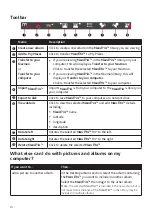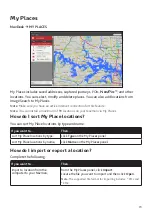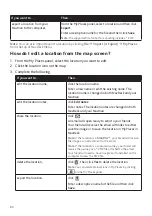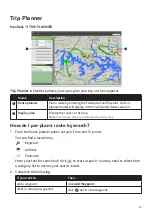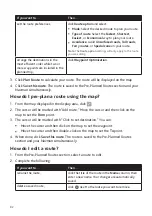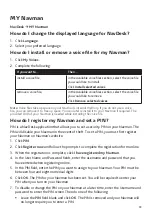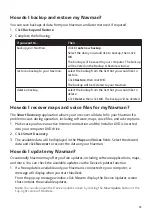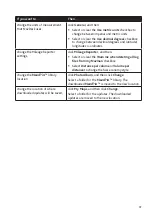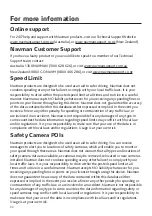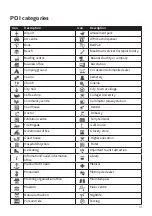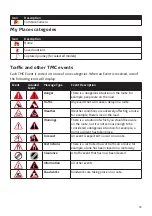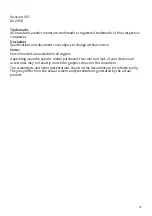
88
Reference
What is GPS?
The Global Positioning System (GPS) is available at any time, free of charge, and is
accurate to within 5m (15ft). GPS navigation is made possible by a network of satellites
that orbit the Earth at around 20,200km (12,552mi). Each satellite transmits a range of
signals which are utilized by GPS receivers, such as your Navman, to determine an exact
location. Although a GPS receiver can detect signals from up to 12 satellites at any time,
only four signals are required to provide a position or "GPS fix" (latitude and longitude),
for vehicle navigation systems.
How does my Navman receive GPS signals?
Your Navman receives GPS signals via the internal GPS antenna. To guarantee the
optimum GPS signal strength, ensure your Navman is outdoors, or in a vehicle outdoors,
and has an unobstructed view of the sky. GPS reception is not usually affected by
weather, however, very heavy rain or snow may have a negative effect on your reception.
Caring for your Navman
Taking good care of your Navman will ensure trouble-free operation and reduce the risk of
damage to your Navman:
Keep your Navman away from excessive moisture and extreme temperatures.
Avoid exposing your Navman to direct sunlight or strong ultraviolet light for extended
periods of time.
Do not place anything on top of your Navman or drop objects on your Navman.
Do not drop your Navman or subject it to severe shock.
Do not subject your Navman to sudden and severe temperature changes. This could
cause moisture condensation inside the unit, which could damage your Navman. In
the event of moisture condensation, allow your Navman to dry out completely before
use.

